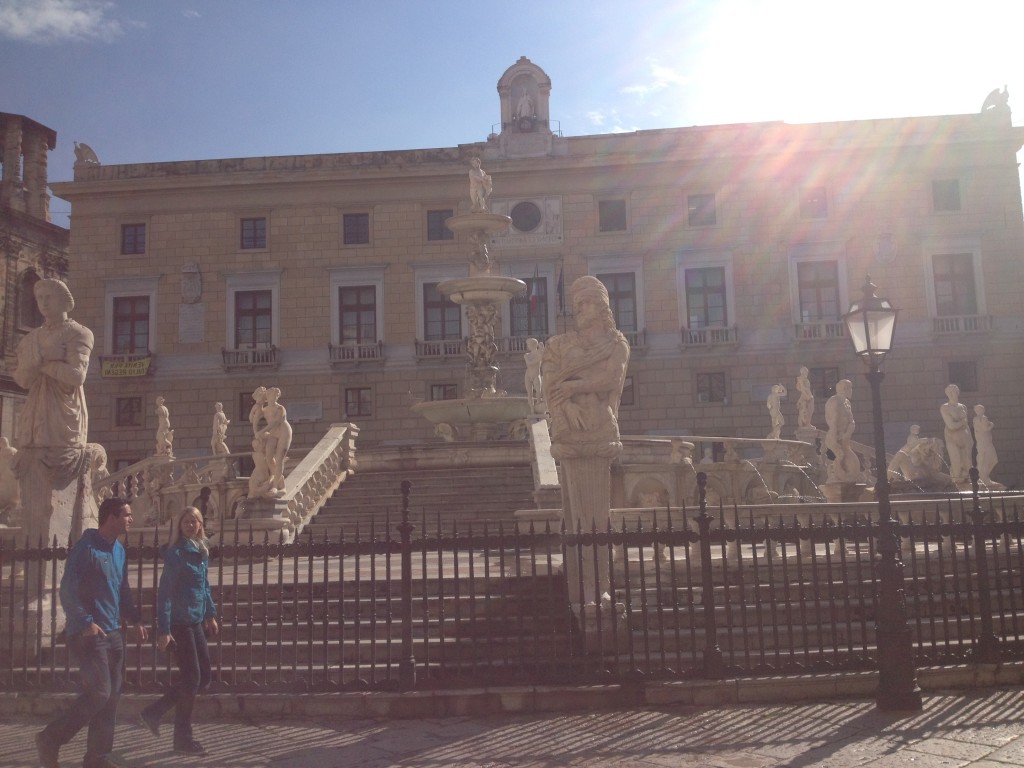Palermo, the biggest city in Sicily, is not overly impressive upon first examination. I mean that as an insult. I was expecting a somewhat more modern city, or at least a more vibrant one. In some ways, the city seemed stuck in the 1960s. Or at least it’s progressing but is behind in part because of the effects from the significant bombing in World War II and the Mafia. Graffiti was all over the place, much of it political.

The above fountain is one of the nicest in the city, but the story behind it tells a more complicated story. The fountain was originally from a villa on the mainland of Italy, but after the owner died, the Palermo government bought the fountain and had it moved to the city. I would expect a city like Palermo to have commissioned fountains themselves, not bought the scraps of a villa. Maybe that’s a little harsh, but what I’m getting at is that Palermo to me lacked a central core. The main square of the city, based around the theater that is the third biggest in Europe, does not feel befitting to the largest city in Sicily. Perhaps most disappointing to me was walking through one of the old market streets and not even realizing that I was because there was so little activity going on.
Another thing that surprised me was the area near to the water. Palermo has a big active port, and then there is a long stretch of land right on the water. That land has a park on it, and so there are no buildings within a hundred yards of the water. Then, a busy road cuts parallel to the water meaning that getting from the buildings to the water is not an easy task. Therefore, unlike a lot of cities, Palermo does not have much of a waterfront district with restaurants and shops.
While this post has been mostly negative, there were plenty of things that I enjoyed in the city. Learning about the anti-Pizzo organization, trying some of the good street food, and taking in the cathedral were great.